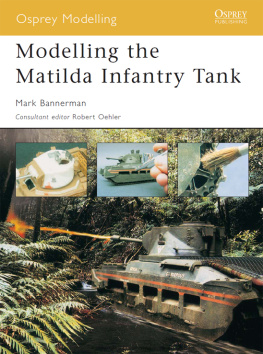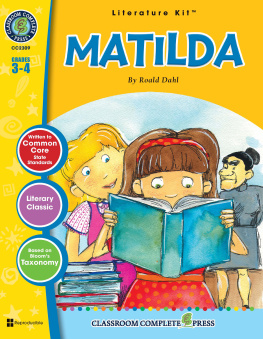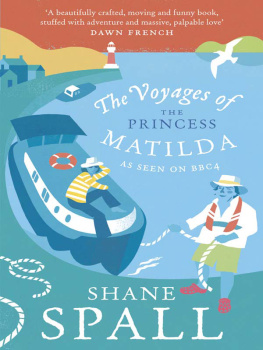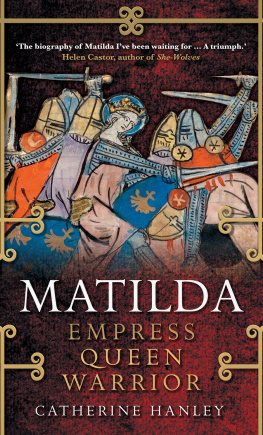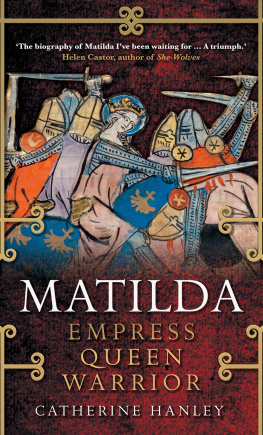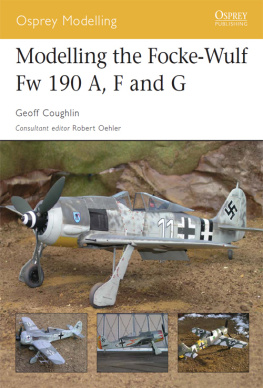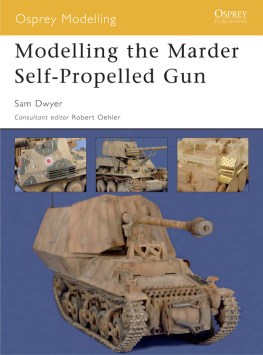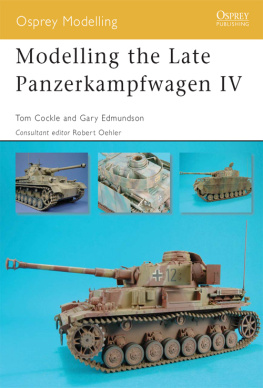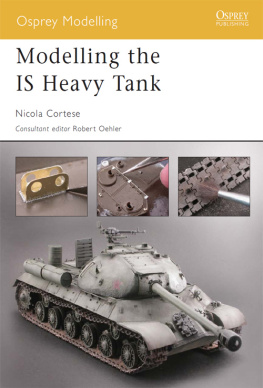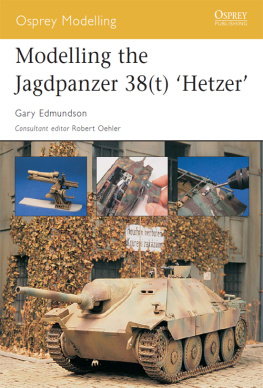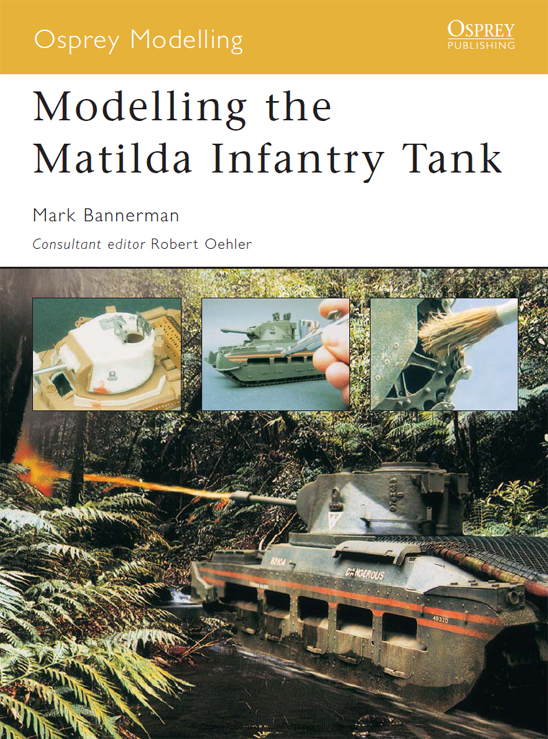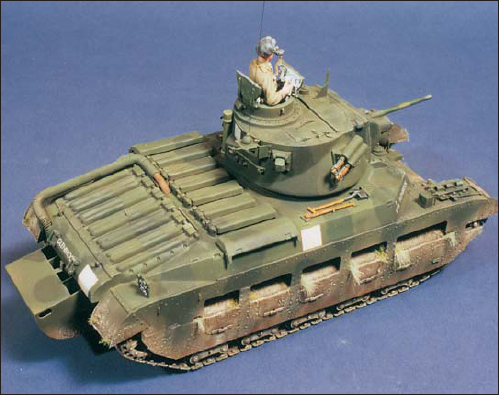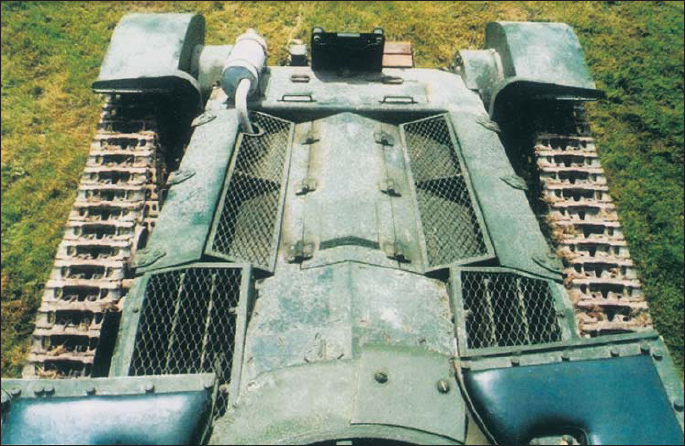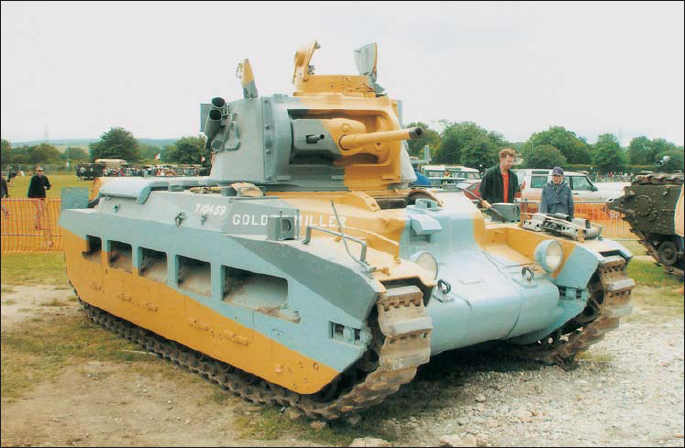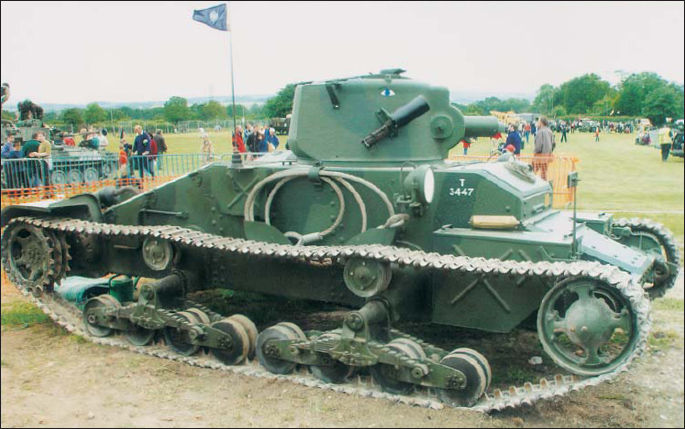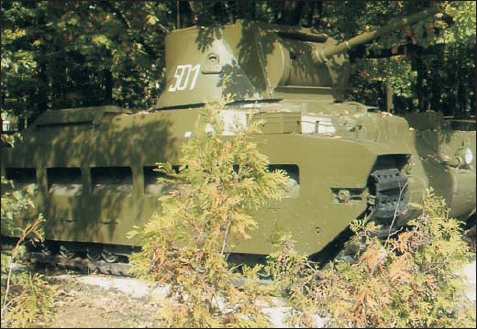Osprey Modelling 5
Modelling the Matilda Infantry Tank
Mark Bannerman
Consultant editor Robert Oehler Series editors Marcus Cowper and Nikolai Bogdanovic
Contents
Introduction
Although models of the Infantry Tank Mk. II (A12), better known as the Matilda, have been around for more than 30 years, it is only recently that manu facturers have recognized the scale modellers interest in this tank. In response to this, a wide range of aftermarket products and kits have appeared. The growing appeal of the Matilda tank to scale modellers is also a reflection of its contribution to early British tank development, and it remains one of the most important and interesting infantry tanks of World War II.
Although the Matilda is predominantly remembered for its vital role in the Western Desert campaign hence the nickname Queen of the Desert it also saw action in the opening days of the war in Northern France, in the Pacific and on the Eastern Front. Matilda variants appeared in many forms, including mine-clearing, demolition, flame-throwing, trench-crossing and gap-bridging. Matildas were used in combat by the British, Russians, Australians, and even the Germans, who pressed small numbers of captured examples into service. The Matilda is a relatively well-documented and photographed infantry tank, and its versatility offers the modeller a wide range of construction and conversion alternatives, painting possibilities and a slew of vignette and diorama options.
In this book, several different Matilda kit offerings will be presented, and the construction, detailing, painting and finishing processes will be described for each. Hints and tips on making a model look more realistic, personalising a model with accessories and figures, and ways to create an appropriate base and setting will also be covered.
View of the upper rear hull of Bovington Tank Museums fully restored Matilda A11, at TankFest 2000. Note the BEF G3/G4 two-green colour scheme. (CS)
A fully restored Matilda A12 (Golden Miller) belonging to Bovington Tank Museum in operation at TankFest 2000. (JWB)
The Bovington Matilda A11 at TankFest 2000. (JWB)
A Matilda on display at the Victory Memorial in Moscow. (PZ)
A brief history of the Matilda
In 1935, Vickers-Armstrong Ltd. was commissioned to design a well-armoured tank armed with one machine gun. The outcome was the Infantry Tank Mk. I (A11). Almost 140 of the A11s were built. However, its slow speed, lack of antitank capabilities, mechanical drawbacks and ineffective performance led to the development of a larger, well-armed and well-armoured infantry tank. The result was a heavier, improved tank, the Infantry Tank Mk. II Matilda A12 or Matilda II. The Matilda II had a crew of four (commander, gunner, loader and driver), weighed 59,000 lbs, was armed with a 2-pdr gun and a 7.92mm Besa machine gun, and had a maximum speed of 15 mph. Almost 3,000 Matildas IIs were built, and the tank passed through five marks. Variants of the Matilda II include the Baron, Scorpion, Canal Defence Light (CDL), bulldozer, the Hedgehog, and the flamethrower Frog (see also the table on ).
Matilda nomenclature
Nomenclature is a frequent point of confusion, as three styles of name were generally used for the Matilda. Originally known as the A11 and A12, the term Matilda sees to have been commonly used from early on. The first official adoption of Matilda was on 11 June 1940 and set out the following new designations:
| Infantry Tank Mk.I | previously known as A11 or Matilda I |
| Infantry Tank Mk.II | previously known as A12 or Matilda II |
| Infantry Tank Mk.IIA | previously known as A12 or Matilda II |
The next name change came in July 1941, and used names for each type of tank, with marks denoting the changes made. The style names and changes can be summarised as:
| Original | June 1940 | July 1941 | Details of changes |
| A12 | Infantry II | Matilda I | AEC engine, co-axial Vickers |
| A12 | Infantry IIA | Matilda II | AEC engine, co-axial BESA, turret vent fan |
| A12 | Infantry IIA | Matilda III | Leyland engine |
| Matilda IV | Rigid engine mounting, turret lamp deleted |
| Matilda V | Westinghouse air servo for gear change system |
Production records are often confusing due to the change of engines. Some Matilda IV vehicles may have been Matilda IIIs: the records are unclear. Also, the Matilda V is not listed as being built, so may have been converted.
Peter Brown
Tools and materials
Essential tools
Although there are many expensive (and useful) hobby tools on the market, such as Dremel power tools, punch and die sets, Optivisors, etc., only a few inexpensive essentials are needed to get started in the hobby. None of the following items cost more than a few dollars or pounds, which makes the initial investment probably the most economical of any hobby.
The most important item in any modellers toolbox is the hobby knife. Although there are different types of knives, the cheapest and best in my view is the X-acto knife with replaceable blades. Hobby knives can be used to remove plastic parts from sprue or photoetch from its fret, to scrape away seam lines on parts, or to remove excess plastic or resin and nasty pour plugs. Nail clippers or small nail scissors are also a good alternative for performing some of these tasks.
A collection of different grades of files and sandpaper is also useful, and both are widely available at hobby stores and hardware outlets at minimal cost. Nail files are useful too, because they can simply be discarded once they become clogged with plastic or resin residue. It should be noted that filing and sanding does create considerable dust, and to avoid inhalation, it is also wise to purchase a face mask to cover your mouth and nose, particularly when sanding resin.
For me, one inexpensive yet vital accessory is a box of wooden toothpicks

